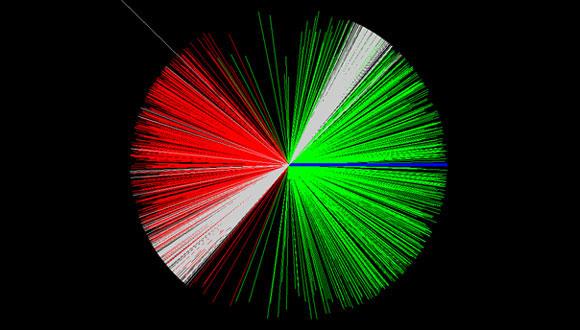Joint Seminar in Nuclear Physics
PROGRAM
14:30 - 14:45 Refreshments
14:45 - 15:45 "Exotic Radionuclides - what are they good for?", Maria Dorothea Schumann, PSI
Abstract:
High-energetic protons and secondary particles induce in matter the production of a big variety of radionuclides, some of them being very rare, exotic, and, in several cases, difficult to obtain by complementary reactions. These isotopes are of high importance in research fields like nuclear astrophysics, basic nuclear physics or environmental science, and sufficient sample material for scientific experiments is urgently needed. Highly-activated components stemming from the surroundings or parts of a high-power particle accelerator are a unique possibility to gain such valuable isotopes. The advantage of "mining" isotopes from waste materials consists in their principal availability, not requiring "extra" beam time. The challenge is their radiochemical isolation from the matrix. PSI operates the Spallation Neutron Source SINQ, which is driven by one of the most powerful high-energetic proton accelerators world-wide (590 MeV, 2.4 mA), and is therefore best-suited as a producer of such rare exotic radionuclides. In the frame of the ERAWAST (Exotic Radionuclides from Accelerator Waste for Science and Technology) initiative a complex program for isotope separation from different matrices has been established at PSI within the past decade. The talk presents an overview on the isotope resources at PSI, the methods for isolation and sample preparation as well as some of the highlights in scientific application.
15:45 - 16:15 Coffee Break
16:15 - 17:15 "Bound Proton Structure Modifications and Universality in A(e;e'p)", David Izraeli, TAU
Abstract:
We measured the ratio Px /Pz of the transverse to longitudinal components of polarization transferred from electrons to bound protons in 12C by the 12C(e; e'p) process at the Mainz Microtron (MAMI). We observed consistent deviations from unity of this ratio normalized to the free-proton ratio, (Px /Pz)12C / (Px/Pz)1H, for both s- and p-shell knocked out protons, even though they are embedded in time averaged local densities that differ by about a factor of two. The dependence of the double ratio on proton virtuality is similar to the one for knocked out protons from 2H and 4He, suggesting a universal behavior. It further implies no dependence on average local nuclear density.


